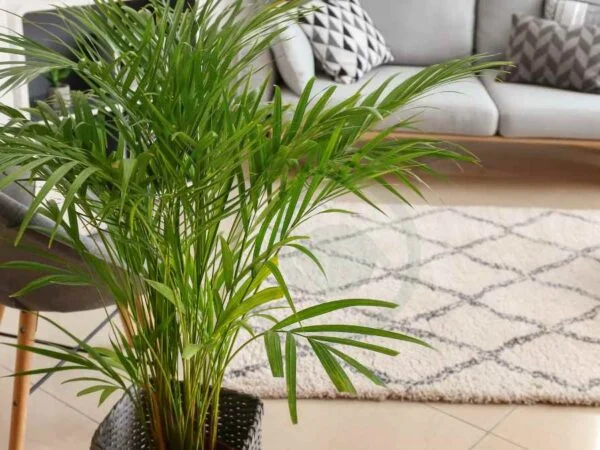Exploring the world of neanthe bella palm care unveils a fascinating journey into the historical significance and timeless appeal of this beloved houseplant. Dating back to the Victorian era, the neanthe bella palm has remained a popular choice for indoor greenery enthusiasts seeking a touch of elegance and tranquility in their living spaces. Understanding the essential care tips and maintenance routines for this resilient plant can elevate your indoor gardening experience to new heights.
Key Takeaways
- Provide your Neanthe Bella Palm with optimal growing conditions by ensuring it receives bright, indirect light and consistent humidity.
- Meet the nutritional requirements of your plant by using a well-balanced fertilizer and avoiding overfeeding.
- Manage your Neanthe Bella Palm by regularly checking for pests, dusting its leaves, and repotting when necessary.
- Utilize propagation methods such as division or planting offsets to expand your collection of Neanthe Bella Palms.
- Maintain the health of your plant through proper watering, pruning yellow leaves, and monitoring for signs of stress or disease.
- Address common issues like yellowing leaves, browning tips, or pest infestations promptly to keep your Neanthe Bella Palm thriving.
Optimal Growing Conditions
Light Exposure
Neanthe Bella Palm thrives in bright, indirect light. Consider placing it near north or east-facing windows for ideal light exposure. Despite this, it can also survive in low-light conditions.
Soil Mix
For optimal growth, ensure the plant is potted in well-draining soil with a slightly acidic or neutral pH level. Choose a loamy container planting medium to promote healthy root development. When planting outdoors, make sure the soil is loose and drains well.
Watering Needs
Maintain the neanthe bella palm by watering it when the soil starts to dry out slightly. Avoid overwatering to prevent root rot. Keep the soil consistently moist to support its growth.
Temperature and Humidity
To thrive, provide the plant with warm temperatures, moderate humidity levels, light, and water. Shield it from cold drafts that can harm its growth. If the plant is near a heating vent, consider misting its leaves with water to maintain adequate humidity levels.
Nutritional Requirements
Fertilizing Practices
To ensure neanthe bella palm growth, apply slow-release fertilizer rich in micronutrients and water. Fertilize twice yearly during the active growing season for optimal health. Avoid fertilizing during the dormant winter period to prevent stress on the plant.
- Apply slow-release palm fertilizer with micronutrients.
- Fertilize twice a year during the growing season.
- Avoid fertilizing in the dormant winter period.
Plant Management
Pruning Techniques
Pruning Neanthe Bella palms involves removing dead stems and fronds using sharp shears. This process helps maintain the plant's health and appearance. Remember that these palms typically need minimal pruning to thrive indoors. Keeping your plant tidy by pruning when necessary ensures its overall well-being.
Potting Advice
When potting a Neanthe Bella palm, opt for a container with drainage holes to prevent overwatering. It is advisable to repot every 2-3 years to refresh the soil and provide the plant with essential nutrients. Ensure that the pot size allows ample space for root growth, promoting a healthy and vibrant plant.
Overwintering Tips
During winter months, adjust your watering routine by reducing frequency to prevent root rot. Protect your Neanthe Bella palm from cold drafts, as exposure to low temperatures can harm the plant. If possible, consider relocating the plant to a warmer location to ensure its survival during colder periods.
Propagation Methods
Propagating Steps
Neanthe Bella palms can be propagated through division of offsets. Carefully separate offsets from the main plant to ensure successful propagation. Plant these offsets in separate containers to promote healthy growth.
Growing from Seed
To grow Neanthe Bella palms from seed, obtain seeds from mature plants. Plant these seeds in a well-draining soil mix to prevent waterlogging and promote root health. Ensure consistent moisture levels for successful seed germination.
Health and Maintenance
Pest Control
Neanthe Bella palms are susceptible to spider mites and mealybugs. These pests can harm the plant by feeding on its leaves. To combat infestations, use neem oil or insecticidal soap promptly. Regularly check the plant for any signs of pest damage.
Disease Prevention
To prevent fungal diseases, avoid overwatering your Neanthe Bella palm. Good air circulation around the plant is crucial for disease prevention. If you notice any signs of disease, take immediate action to stop it from spreading.
Troubleshooting Common Issues
Problem Solving
Yellowing leaves can be addressed by placing the neanthe bella palm in an area with adequate indirect light. This helps maintain the plant's vibrant green color.
To resolve brown tips on the leaves, adjust the watering practices of the neanthe bella palm. Ensure that the plant is not overwatered or underwatered.
Check for symptoms of root rot, such as mushy roots and a foul odor. Adjust the watering frequency to prevent further damage to the plant.
- Adjust light exposure
- Revise watering practices
- Monitor for root rot symptoms
Encouraging Bloom
Bloom Induction
To encourage lush foliage and a captivating palm appearance, provide the neanthe bella palm with optimal growing conditions. Understand that blooms on the Phoenix roebelenii typically appear after several years of growth. Appreciate the beauty of small yellow or red panicles that adorn the plant.
- Optimal growing conditions include adequate sunlight, regular watering, and well-draining soil.
- Avoid over-fertilizing, as it can hinder blooming and overall plant health.
Advanced Care Tips
Types and Varieties
Neanthe Bella palms come in various types, each with distinct characteristics. Explore these varieties to add diversity to your indoor plant collection. Some variations include differences in leaf color and size, offering a range of aesthetic options. Consider mixing different types for a visually appealing display.
- Different varieties offer unique features
- Leaf color and size can vary among Neanthe Bella palms
Adding multiple types of Neanthe Bella palms to your home can create a vibrant and dynamic indoor garden. The variations in leaf color and size allow you to experiment with different combinations, enhancing the overall look of your living space. By incorporating diverse types, you can enjoy a visually stimulating environment that promotes relaxation and well-being.
Final Remarks
In caring for your Neanthe Bella Palm, you've learned about the crucial growing conditions, nutritional needs, management techniques, propagation methods, maintenance tips, troubleshooting strategies, blooming encouragement, and advanced care insights. By following these guidelines, you can ensure the well-being and vibrancy of your plant. Remember to monitor its environment, provide adequate nutrients, and address any issues promptly.
Your efforts in understanding and implementing these care practices will not only foster a healthy Neanthe Bella Palm but also bring nature's beauty into your living space. Continue to nurture your plant with dedication and attention to detail. Share your experiences and newfound knowledge with fellow plant enthusiasts to create a community of thriving indoor gardens.
Frequently Asked Questions
How can I provide optimal growing conditions for my Neanthe Bella Palm?
To provide optimal growing conditions, ensure your Neanthe Bella Palm receives bright, indirect light, consistent moisture, and a humid environment. Avoid direct sunlight and drafts to prevent stress on the plant.
What are the nutritional requirements of a Neanthe Bella Palm?
Neanthe Bella Palms require a balanced fertilizer with equal parts nitrogen, phosphorus, and potassium. Use a water-soluble fertilizer diluted to half strength during the growing season to support healthy growth.
How should I manage my Neanthe Bella Palm effectively?
Manage your Neanthe Bella Palm by regularly checking soil moisture, dusting the leaves, monitoring for pests, and rotating the plant occasionally for even growth. Prune yellow or damaged leaves to maintain plant health.
What are the propagation methods suitable for Neanthe Bella Palms?
Propagation of Neanthe Bella Palms can be done through division or planting seeds. Division involves separating offsets from the main plant, while planting seeds requires patience as it is a slower process but can be rewarding.
How can I troubleshoot common issues with my Neanthe Bella Palm?
Common issues like yellowing leaves, brown tips, or pest infestations can be resolved by adjusting watering frequency, improving humidity levels, inspecting for pests regularly, and ensuring proper drainage in the soil. Swift action can help restore your plant's health.
Image Source: Paid image from CANVA





